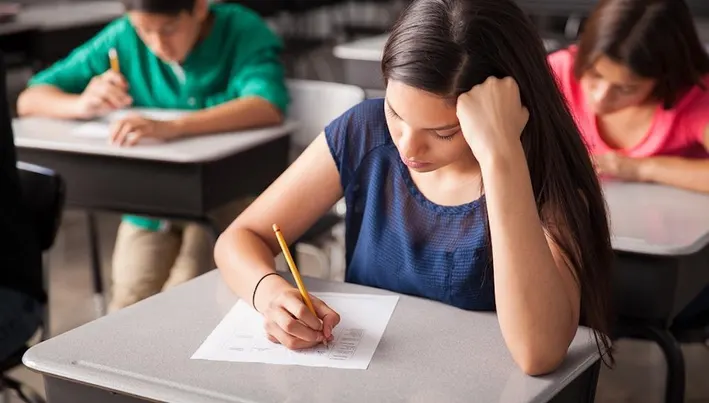I’ll never forget my first real standardized test. It was in middle school, and everyone was hyped up—posters in the hallways, teachers drilling practice questions, even a “test day” pep talk. It felt like everything we’d done all year came down to that one bubble sheet.
And honestly? That pressure stuck with me.
Standardized testing has become one of the most talked-about, debated, and misunderstood parts of the education system. For some, it’s a way to measure progress. For others, it’s a stress-inducing hoop to jump through. Either way, it’s a big deal—and it’s worth digging into what it really means for students and schools.
What Is Standardized Testing?

Let’s break it down:
Standardized tests are exams that are given and scored in the same way for all test-takers. They’re designed to measure student performance across schools, districts, and even countries, using consistent methods and criteria.
You’ve probably heard of:
-
SAT, ACT (college admissions in the U.S.)
-
PSAT, GRE, LSAT
-
State assessments (like STAAR, PARCC, or Smarter Balanced)
-
International exams like PISA or IELTS
These tests usually focus on math, reading, writing, and sometimes science—subjects seen as academic “core” indicators.
The Purpose: Why Do We Use Standardized Tests?
In theory, standardized tests are meant to:
-
Compare student performance fairly across schools
-
Hold schools accountable for educational outcomes
-
Identify gaps in learning across demographics
-
Help determine college readiness or placement
That all sounds great on paper. And honestly, I get the appeal. Testing gives schools and governments data to work with. It helps identify trends, strengths, and weaknesses at a broad level.
But in practice? The story gets more complicated.
The Real-World Impact on Students
Let me tell you—being a student during testing season feels nothing like a “growth opportunity.” It’s high-stakes, high-pressure, and often a poor reflection of what you actually know or how you learn.
Here’s what I—and so many others—have felt:
-
Test anxiety: It’s real, and it can tank your performance even if you know the material.
-
Narrow learning: Teachers sometimes “teach to the test,” cutting out creativity and deep learning.
-
One-size-fits-all approach: Not every student learns (or shows what they know) the same way.
I had classmates who were brilliant thinkers, artists, and problem-solvers—but they struggled to finish tests on time or froze under pressure. Does that mean they weren’t smart? Not at all. But the test didn’t reflect that.
The Pressure on Teachers and Schools
Standardized tests don’t just affect students—they put serious pressure on teachers and administrators too.
In some schools, test scores are tied to:
-
Teacher evaluations
-
School funding
-
Public rankings and perception
-
Policy decisions
This creates a tough environment where educators may feel forced to focus more on test prep than on holistic education. I’ve had teachers confess that entire months were lost to drills and review packets—not because they wanted to teach that way, but because they felt they had no choice.
And that’s not good for anyone.
Are There Benefits to Standardized Testing?
Absolutely. Despite the downsides, standardized testing does serve some useful purposes, especially when used carefully and thoughtfully.
- Provides measurable data: Helps track performance over time
- Highlights equity gaps: Reveals systemic issues affecting certain student groups
- Supports college admissions: Offers a standardized point of comparison
- Encourages academic focus: Motivates some students to push themselves
The key is balance. Testing can be a helpful tool—but only if it’s one piece of the bigger puzzle.
What Needs to Change? A More Balanced Approach
We don’t need to throw out testing entirely—but we do need to rethink how we use it.
Here’s what I believe could make a big difference:
-
Less weight, more context: Use tests as one measure—not the measure—of learning
-
More types of assessment: Include portfolios, projects, presentations, and creative work
-
Test flexibility: Let students with IEPs or different learning styles show their knowledge in alternative ways
-
Better prep, less pressure: Teach real skills, not just strategies for filling in bubbles
When students are empowered to understand the test without being defined by it, outcomes improve naturally.
Love great food and unforgettable experiences? Check out Decology for the best in dining, recipes, and entertainment inspiration! – https://decology.com
Final Thoughts: It’s About the Bigger Picture
Standardized tests aren’t evil. They’re tools. And like any tool, they can be used well—or misused.
I believe we can create a system where tests provide valuable feedback without limiting creativity, adding stress, or reducing students to a number. It starts by listening—to students, teachers, and communities—and building something that actually supports learning.
Because education should be about growth, not just scoring points. And every student deserves the chance to succeed on their terms—not just the test’s.


